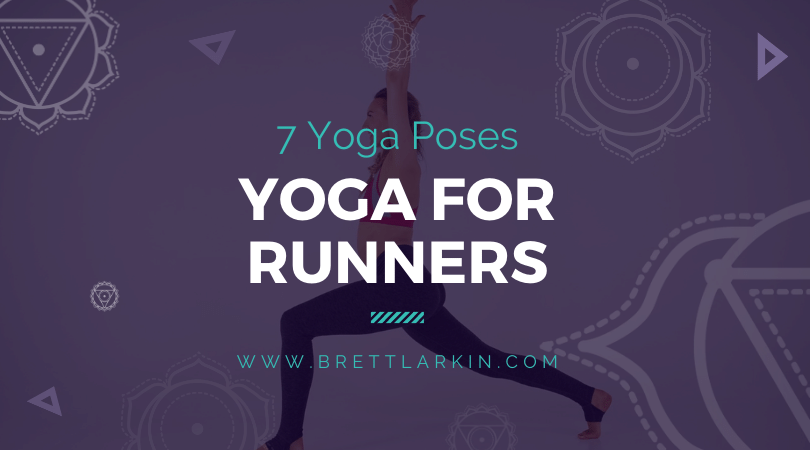
People don’t often connect yoga with running. But start stretching for a few days just before stepping out for a run, or after, and you will see why yoga and running are meant to be together.
I come across many runners who are recovering from a pulled hamstring or a twisted ankle, or just the act of running itself.
Maybe the reason why runners often injure themselves or need a “recovery period” is that running aggravates the existing imbalances in the body.
Incorporating yoga into your fitness routine can truly transform the way your mind and body react to running. It’s amazing how a little bit of stretching can improve your strength, flexibility, breath control, balance, and posture.
If you want to try a 40-minute yoga routine for runners, then check out my Yoga For Runners class on YouTube.
Otherwise, here are 7 yoga poses for runners that you can do at home.
1. Downward Facing Dog (Adho Mukha Svanasana)
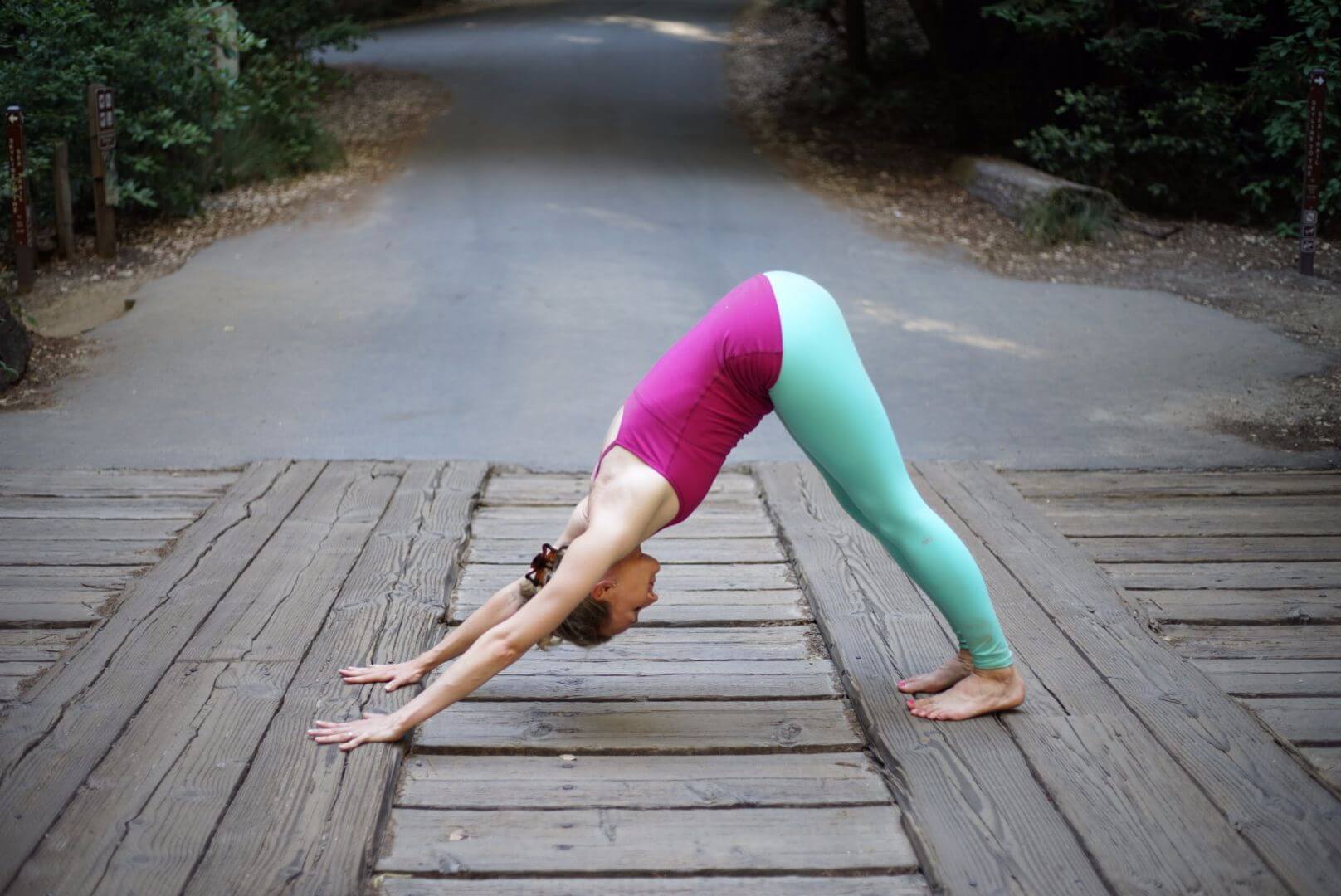
How it’s done:
- Begin on your hands and knees, with the knees stacked directly under the hips and hands forward of your shoulders. Draw your lower abs up and in, curl your toes under.
- Spread your palms, focus the pressure on your knuckles. With the first inhalation, lift your sitting bones toward the ceiling, lengthen legs and press thighs and ankles up and back.
- Place your feet hip-width apart, heels yearn back and down. At this stage, your thighs are in neutral rotation and your muscles engaged. Keeping your pelvis neutral, draw your pubic bone and tailbone up and back. Draw your abdominal muscles back and in, creating an even length in the front, sides and the back of the torso.
- Distribute your weight evenly across knuckles and hands. Rotate your forearms internally as your upper arms rotate externally so that your elbow creases face your thumbs. Keep your ears in line with your biceps, jaws relaxed and breath steady.
- Come out of the pose on an exhalation by lowering the knees and resting in the Child’s Pose (Balasana)
What it does:
- Calms the mind and relieves stress
- Strengthens the shoulders and arms
- Elongates the spine and torso
- Relaxes hamstrings
- Stretches the calf muscles and lower back
2. Bow Pose (Dhanurasana)
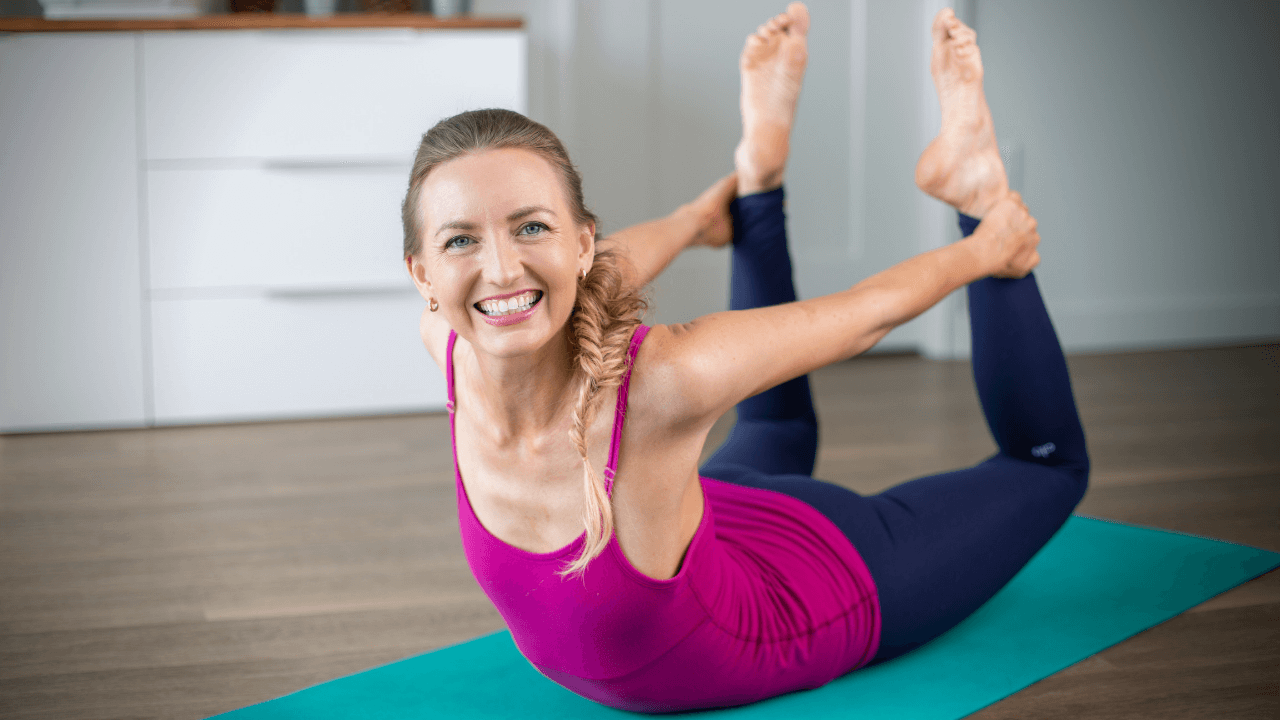
How it’s done:
- Begin in the prone pose (by lying down on your belly) on the yoga mat. Place a blanket under your hips and lower abdomen for better balance. Rest your forehead on the mat, arms by your side, palms up, legs stretched long, feet facing outward. With the first exhalation, bend your knees and pull your heels towards your buttocks. Stretch your arms backwards and take hold of the outside of your ankles. Curl your toes inwards.
- Draw your shoulder blades slightly toward your spine and pull them back again, away from your ears. Make sure your knees are hip-width apart. Keep your buttocks firm but not clenched.
- With the next inhalation, lift your thighs and torso away from the mat, moving your heels away from the buttocks. Draw your lower abs up and in, lengthening the sides of your waist evenly from the hips to the ribcage. Move your shoulders away from the ears as your chest broadens.
- Position your gaze forward or slightly down; relax your jaw. Breathe steadily as you soften the top of your shoulders away from the ears. Lift your inner thighs slightly as the outer thighs roll down, all the while keeping your knees hip-width apart.
- Come out of the pose on an exhalation by releasing down and relaxing your body back to the prone position.
What it does:
- Improves breath control
- Boosts energy and stamina levels
- Expands the chest and shoulders
- Strengthens all major muscles in the back

3. Mountain Pose (Tadasana)
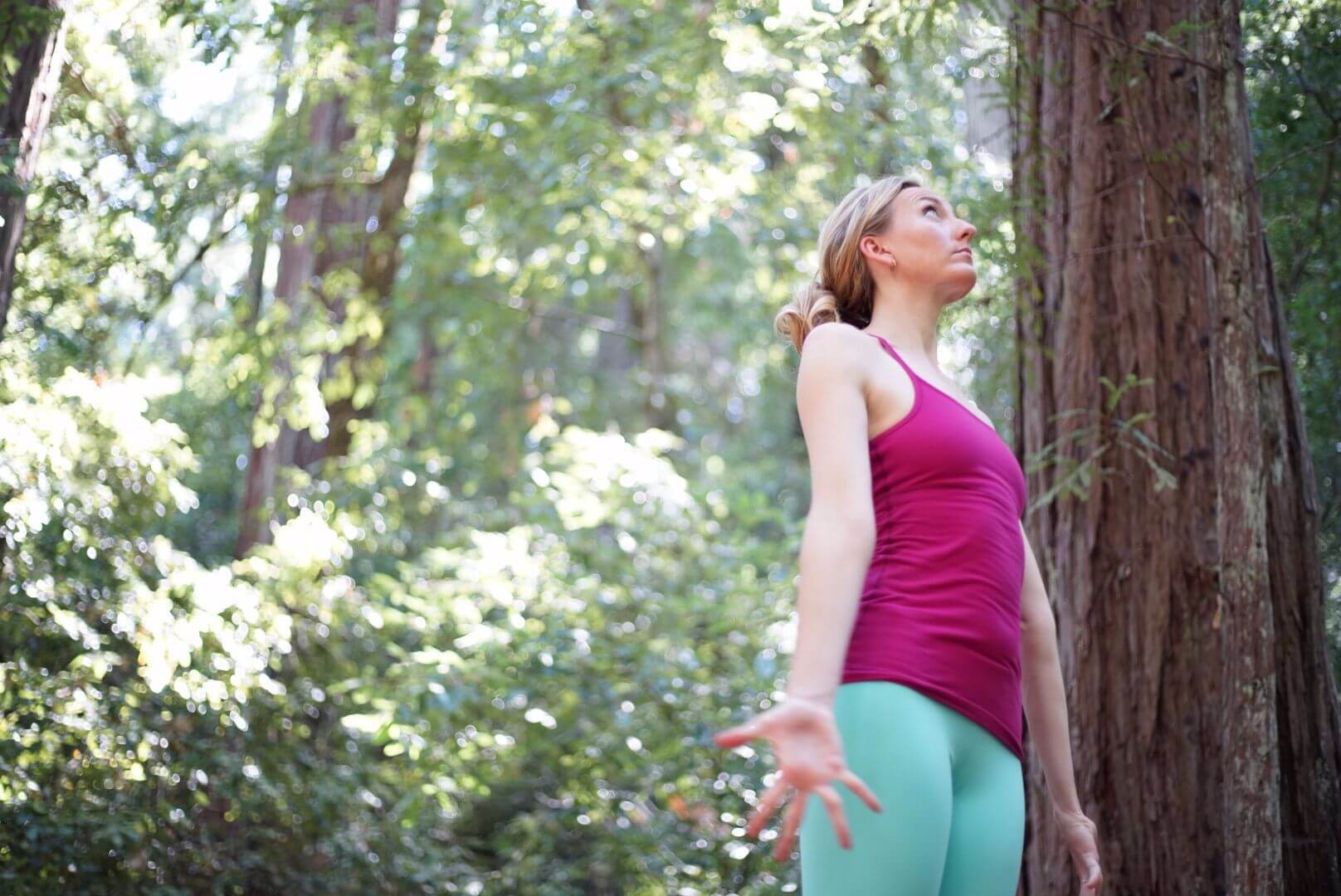
How it’s done:
- Start with a comfortable standing position. Keep your breath steady and legs, abdominal muscles, and arms engaged. Soften the tips of your shoulders away from the ears. Keeping your eyes closed, take a few deep breaths to be fully aware of your body.
- Place your feet hip-width apart, the inside edges parallel. Ground your feet, maintaining space between the toes. Make sure your weight is evenly distributed across all four corners of both feet. Ensure that your thighs are in a neutral position—the center seams of the thighs should point directly forward.
- Engage the thigh muscles by slightly lifting your knee caps, drawing your inner thighs towards each other. Level your hips so they point forward. Firm your lower abs in and up, knitting your ribs, thus elongating the front, back, and sides of your torso.
- Gently rotate your arms externally, palms facing forward. Keeping your arms straight, gently converge your shoulders towards each other and away. Ensure that your arms and hands are energized, fingers spread and shoulders stacked over the hips.
- With your shoulders stacked over the hips, bring your arms slightly forward and up over your head with an inhalation. Energize your hands and arms by stretching them straight overhead and spreading your fingers.
What it does:
- Grounds the body
- Improves breath control and focus
- Rewinds body to the anatomical neutral
- Aligns posture
- Tones the lower abdominal muscles
- Strengthens the muscles in ankles and feet
Do you have tight hips? Try my 30-second quiz to find out if you have tight hips!
4. Bridge Pose (Setu Bandha Sarvangasana)
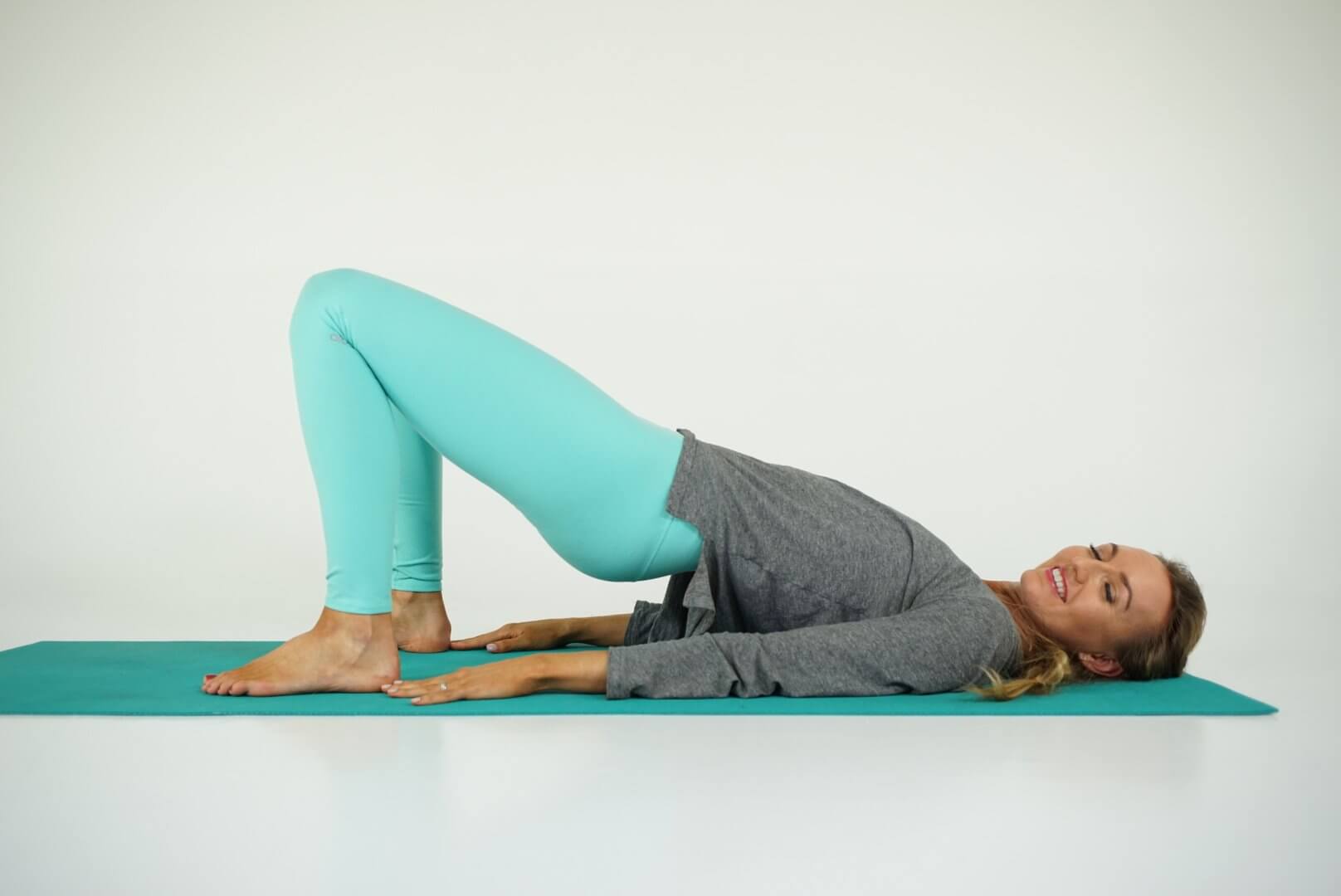
How it’s done:
- Begin by lying down on your back, knees bent and feet flat on the mat. Try to bring your feet parallel to each other and towards the seating, at hip-width apart. Make sure that the feet, ankles, and knees are aligned. Stretch your arms by your side, palms down, pointing towards your feet. Keep your chest spread and shoulders firm and down.
- On the next inhalation, press through your feet and raise your hips. Keep your buttocks and inner thighs firm (not clenched). When doing this, your lower abs will firm in and up, and the sides of your waist will lengthen evenly from the ribcage to the hips.
- Draw your inner thighs towards each other, lengthening your tailbone towards the heels and pulling your pubic bone forward. Broaden your chest as the shoulder blades draw in and down. Rotate your arms externally with your fingers spread wide.
- Press your shoulders, arms, and hands firmly into the mat, lifting and spreading through the chest. Relax your throat and jaw, and keep your breath steady.
- Come out of the pose on an exhalation by gently lowering your back down onto the mat. Rest your feet mat-width apart and relax your arms and knees.
What it does:
- Aligns the spine and hips
- Stretches out the hip flexors
- Stabilizes gluteal muscles
- Lengthens core muscles
- Fortifies the entire body
- Stimulates the nervous system
You might also like: Yoga For Migraines: 7 Yoga Poses That Will Ease Tension
Make your yoga practice 2x more potent in HALF the time (usually $47) FREE 👇
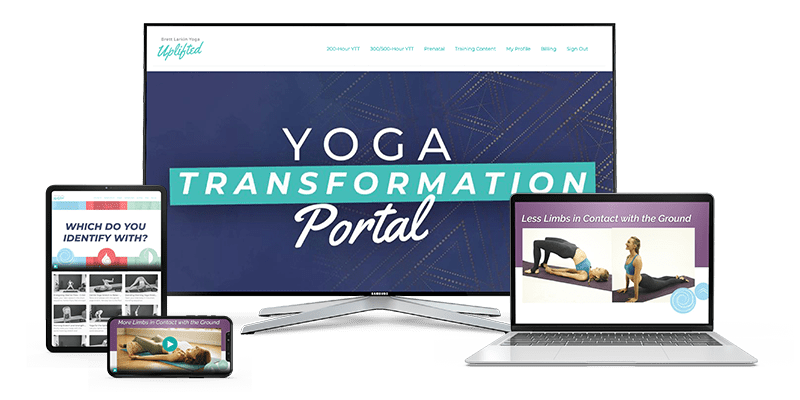
Make your yoga practice 2x more potent in 1/2 the time. FREE two-hour Yoga Transformation Portal (usually $47) [Claim it Free Here]

5. Tree Pose (Vriksasana)
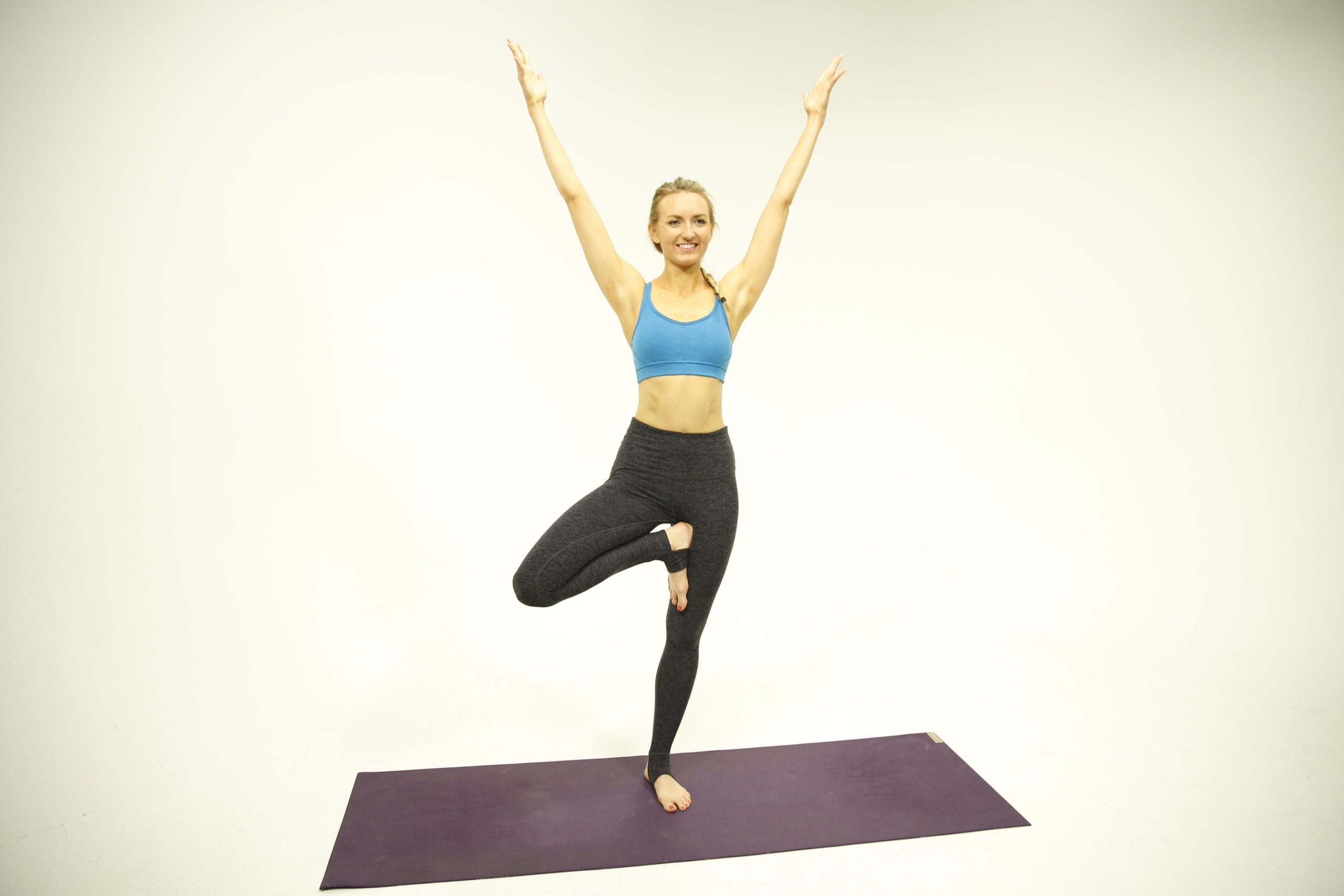
How it’s done:
- Begin with the Mountain Pose (Tadasana). Bring your hands together in prayer towards your heart. Channel your body weight into the right foot and slowly bend your left knee. Pause and take a few breaths to prep yourself for the pose.
- Draw your left foot to the inside of your right ankle, shin or thigh (whichever is most comfortable)—ensure that you avoid placing the foot on the right knee. Press your left foot into your right leg and let your left thigh rotate externally from the hip.
- Square forward, keeping your hips in neutral alignment. Firm your lower abs in and up, letting the muscles of the right leg firm up as the right foot roots into the ground.
- Lift your arms above your head with the next inhalation, your biceps converging towards each other, fingers energized. Soften the shoulder top away from your ears. Breathing steadily, release all the pent up tension from your face as you maintain a focused gaze.
- Come out of the pose on an exhalation by lowering your arms and backing down into the Mountain Pose (Tadasana). Repeat on the other side.
What it does:
- Boosts balance and focus
- Stretches the shoulders, torso, and thighs
- Tones the outer hip muscles
- Strengthens calves and ankles
- Helps correct flat feet
6. Dancer Pose (Natarajasana)
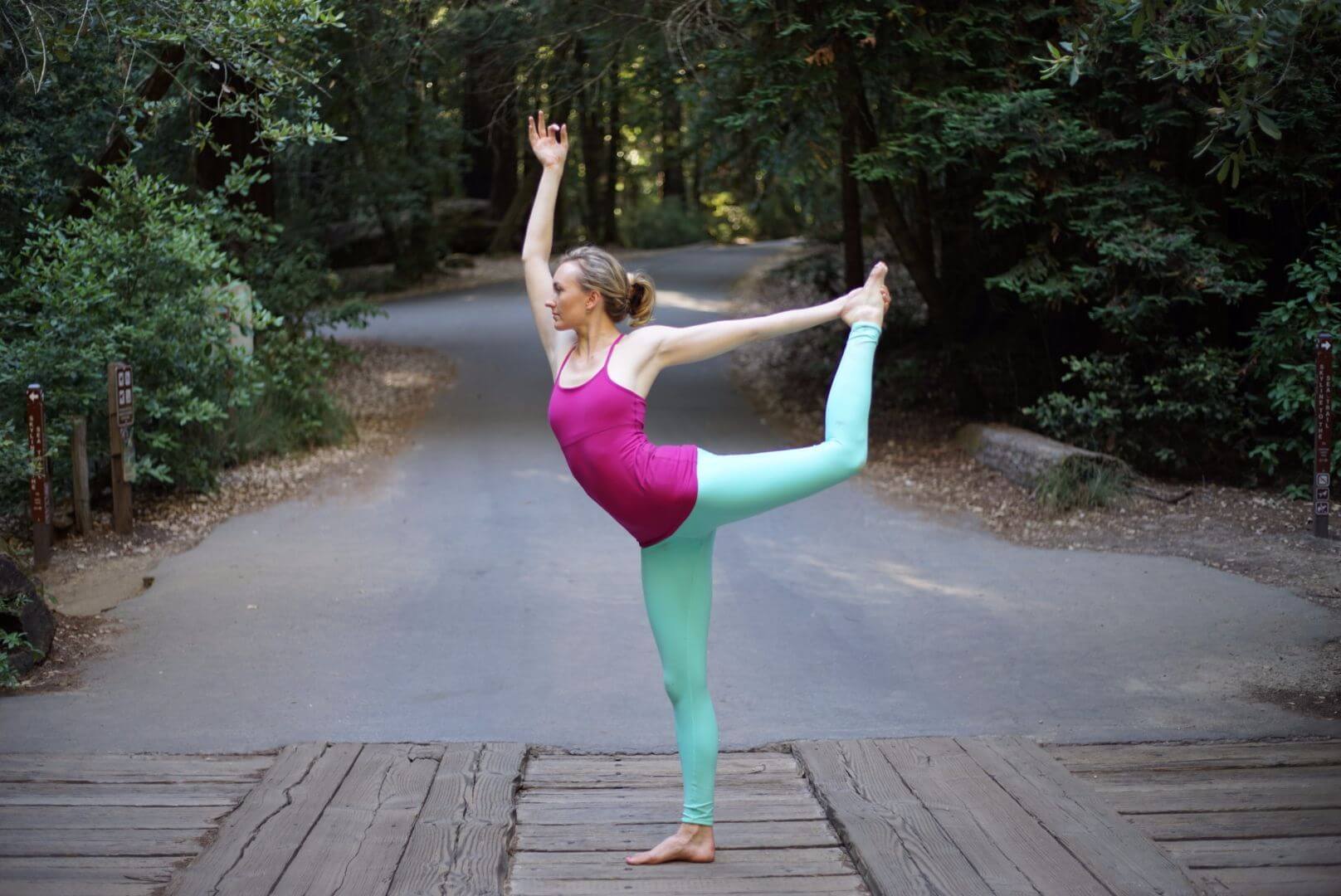
How it’s done:
- Start with the Mountain Pose (Tadasana) on the mat. Release the right arm by your side, with the palm turned out and bring the left arm to your hip. Channel your weight to the left foot, bend the right knee and slowly lift the heel, the toes pointing out. Focus your gaze on a point on the floor, a few feet in front of you—this will help balance your body better. Take a few deep breaths before the next step.
- Bend your right knee deeply, lifting it in process, and bring the right food towards the right glute. Hold onto the inside of the right foot or ankle with your right hand.
- With the next inhalation, sweep your left arm up towards the ceiling. Let your lower abs firm in and up, knitting the ribs and lengthening the front, sides and back of the torso.
- With an exhalation, move your torso forward and slightly towards the floor, and kick your right foot back and up. Let your hips and torso yearn towards the square.
- Breathe steadily, keeping your legs, abs and arms energized and engaged. Dip your chin slightly, relax your jaw.
- Come out of the pose on an inhalation using the abs. Let your torso rise back upright and release the right leg back to the floor. Bring both the arms to the side and rest once again in the Mountain Pose (Tadasana). Repeat on the other side.
What it does:
- Improves flexibility
- Improves balance and endurance
- Opens the chest and shoulders
- Unwinds the muscles in the hips and legs
- Strengthens the core, legs, and hip flexors
7. High Lunge Pose (Alana)
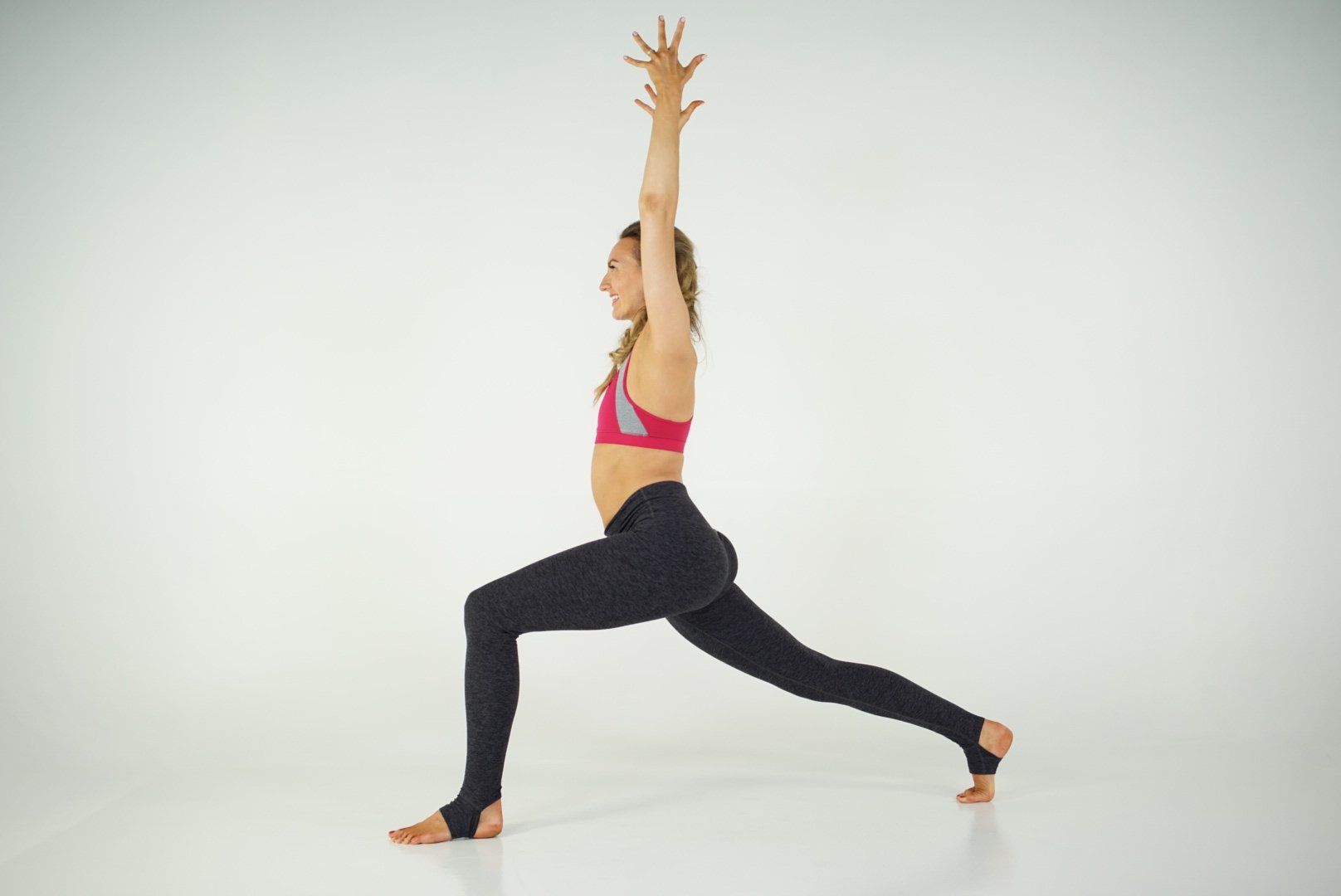
How it’s done:
- Begin in the Mountain Pose (Tadasana), at the top of the mat. With an exhalation, take a long step backwards with your left foot and place your hands on the hips. Keep your right foot (front foot) firmly on the mat pointed forward and point your left foot (back foot) in the same direction, heel lifted.
- Bend your right (front) knee, stacking it over the ankle, thigh parallel to the floor. Lengthen the left (back) thigh, engaging the muscles and pressing through the heel of the left (back) foot.
- At this point, your inner thighs will energetically converge towards each other. Let your lower abs firm in and up, knitting the ribs and lengthening the front, sides, and back of the torso.
- With your shoulders stacked over the hips, inhale your arms slightly forward and up over your head, fingers stretched towards the ceiling. Keep your breath steady and legs, abdominal muscles and arms engaged and energized. Soften the shoulder blades away from the ears.
- Come out of the pose with an exhalation by bending the left (back) knee and using the abs to gently ease back into the Mountain Pose (Tadasana). Repeat on the other side.
What it does:
- Opens the chest
- Builds balance and stamina
- Strengthens arms and legs
- Stretches the groin
- Stretches tight hips and psoas muscles
- Relieves sciatica
That concludes our list! You can start slow with a couple of stretches and gradually ease into a complete pre-run or post-run yoga routine to either warm up or wind down your body, depending on what works best for you.
Remember, no two bodies or minds are the same, so, it’s up to you to tailor the best yoga sequence for yourself.
Keep in mind that each of these steps has variations, modifications and contraindications.
Let me know what you think of these poses and whether they have helped improve your form and stamina. Feel free to drop a comment for further remarks or queries.
Want more yoga pose tutorials? See more in my Yoga Pose Directory.
Next Steps
- If you’re interested in practical kriya yoga as a way to improve your daily life and relationships, check out my Yoga for Self Mastery course.
- Order my Yoga Life book for a practical guide to creating balance in your life through yoga.
- Check out my YouTube channel and find some yoga classes that you can try out for yourself!
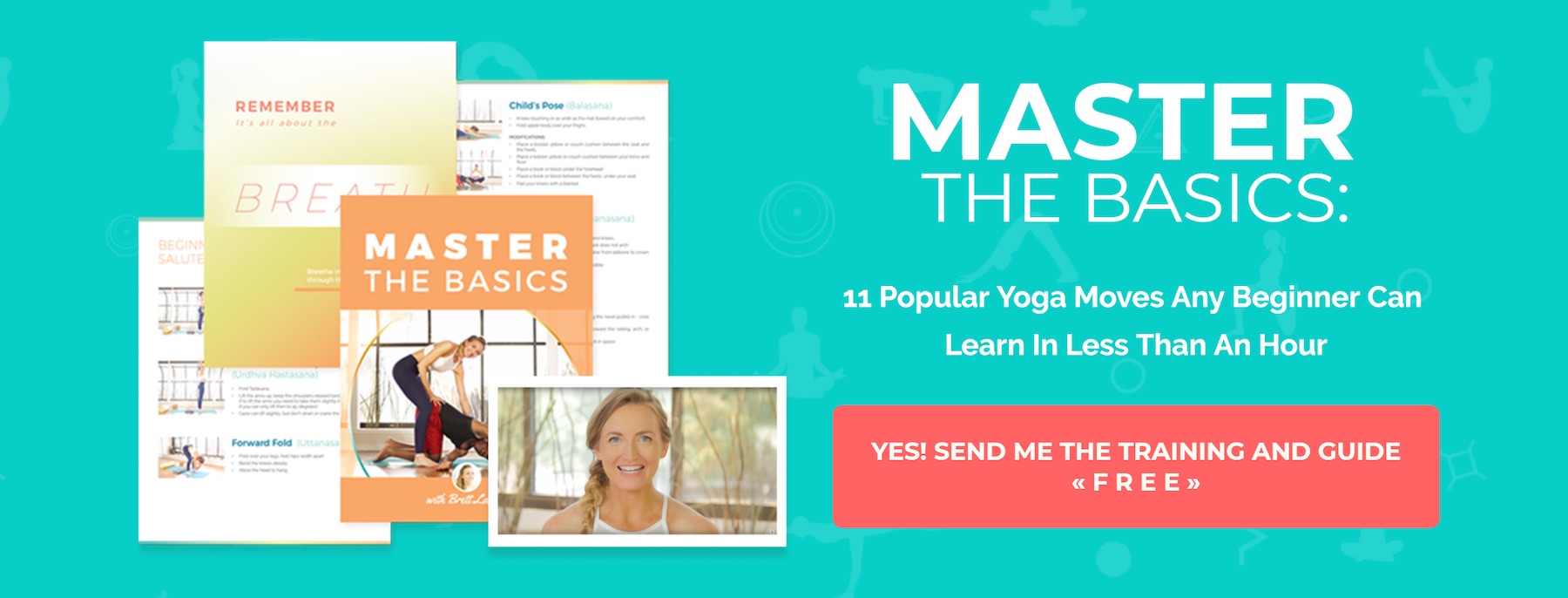
Learn how to do 11 of the most popular yoga poses correctly. Free video + PDF download.

Find more yoga sequences by benefit.
YOU MIGHT ALSO LIKE
- Authentic Pathways: Connecting With Higher Self for Inner Peace
- Yoga to Reconnect with Yourself: 5 Essential Practices for Inner Peace
- Yoga for Connection: 10 Poses to Deepen Relationships and Bonding
- Yoga To Connect With Your Body For Mind-Body Harmony
- Yoga to Connect with Feminine Energy: 5 Transformative Practices
- Yoga to Connect with Your Heart: 3 Poses for Emotional Balance
- Myofascial Release Yoga: Unlock Tension and Improve Flexibility
- 6 Hip Openers For Emotional Release
- Office Yoga: 10 Poses You Can Do Right Now
- Ayurveda Food Combining: The Key to Balanced Digestion
- Yoga For Grief: 8 Yoga Poses For Support
- Yoga for Vata Dosha: Practice Poses and Tips
- Yoga for Pitta Dosha: Practice Poses and Tips
- Yoga for Kapha Dosha: Practice Poses and Tips
- Can We Do Yoga During Periods? Here’s The Yoga Philosophy
Learn how to do 11 of the most popular yoga poses correctly. Free video + PDF download.








